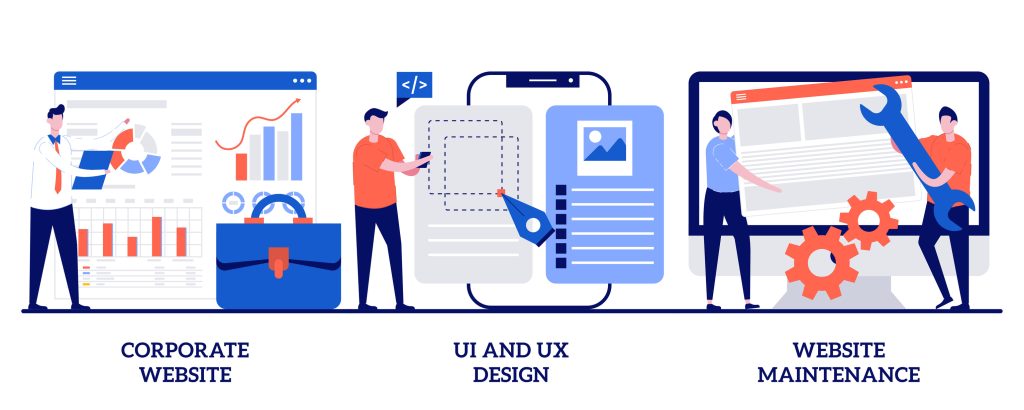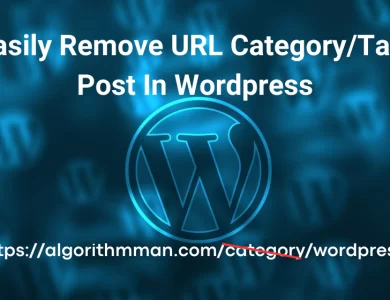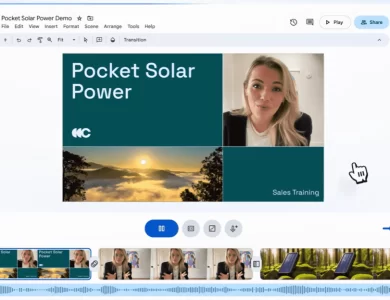Comprehensive Web Programming Guide
What is Web Programming and Why is Web Programming Important?

In today’s digital age, web programming has become a fundamental skill for anyone looking to build a career in technology. Whether you’re a beginner trying to learn the basics or an experienced developer looking to expand your skillset, understanding web programming is essential. In this comprehensive guide, I explain what web programming is, why it’s important, and how you can get started. Enjoy reading 🙂

What is Web Programming?
Web programming, also known as web development, refers to the creation of dynamic and interactive websites using programming languages, frameworks, and tools. Unlike web design, which focuses on the visual aspects of a website, web programming involves writing the code that powers the functionality and interactivity of web applications.

Why is Web Programming Important?
- High Demand for Web Developers: With the rapid growth of the internet and digital platforms, there is a constant demand for skilled web developers. Businesses of all sizes need websites to reach their audience, which creates ample job opportunities.
- Versatility: Web programming skills are highly versatile and can be applied to various domains such as e-commerce, blogging, social media, and more. Whether you’re building a personal portfolio or a large-scale enterprise application, web programming is crucial.
- Innovation and Creativity: Web programming allows developers to bring their creative ideas to life. You can build unique user experiences, solve complex problems, and innovate with new technologies.
- Competitive Advantage: Having web programming skills can give you a competitive edge in the job market. It demonstrates technical proficiency, problem-solving abilities, and a commitment to continuous learning.

Key Concepts in Web Programming
1. Front-End Development
Front-end development involves creating the part of the website that users interact with directly. This includes the layout, design, and interactivity of the website. Key technologies used in front-end development include:
- HTML: Hypertext Markup Language (HTML) is the standard markup language used to create web pages. It provides the structure of a webpage, allowing developers to define elements such as headings, paragraphs, links, and images.
- CSS: Cascading Style Sheets (CSS) is used to control the appearance of HTML elements. It allows developers to apply styles such as colors, fonts, and layouts to create visually appealing websites.
- JavaScript: JavaScript is a scripting language that adds interactivity to web pages. It enables dynamic content updates, form validation, animations, and more.
2. Back-End Development
Back-end development involves creating the server-side logic that powers the functionality of a website. This includes managing databases, server configuration, and application logic. Key technologies used in back-end development include:
- Programming Languages: Common programming languages for back-end development include Python, Java, Ruby, PHP, and Node.js. Each language has its own strengths and is suited to different types of applications.
- Databases: Databases are used to store and manage data for web applications. Common databases include MySQL, PostgreSQL, MongoDB, and SQLite. Developers use SQL (Structured Query Language) to interact with relational databases.
- Frameworks: Frameworks provide a structured approach to building web applications. Popular back-end frameworks include Django (Python), Spring (Java), Ruby on Rails (Ruby), Laravel (PHP), and Express.js (Node.js).
3. Full-Stack Development
Full-stack development involves both front-end and back-end development. Full-stack developers are proficient in both areas and can build complete web applications from start to finish. They have a comprehensive understanding of how different components of a web application work together.

How to Get Started with Web Programming
- Learn the Basics: Start by learning the basics of HTML, CSS, and JavaScript. These are the foundational technologies for front-end development. There are plenty of free online resources and tutorials available to help you get started.
- Build Projects: Practice your skills by building small projects. Create simple websites, web forms, and interactive elements to apply what you’ve learned. This hands-on experience is crucial for mastering web programming.
- Explore Frameworks and Libraries: Once you’re comfortable with the basics, explore popular frameworks and libraries such as React, Angular, Vue.js, Django, and Node.js. These tools can streamline your development process and help you build more complex applications.
- Learn Version Control: Version control systems like Git are essential for web developers. They allow you to track changes to your code, collaborate with others, and manage different versions of your projects.
- Join Communities: Join online communities and forums where you can connect with other web developers. Websites like Stack Overflow, GitHub, and Reddit have active communities where you can ask questions, share knowledge, and collaborate on projects.
- Stay Updated: Web development is a constantly evolving field. Stay updated with the latest trends, technologies, and best practices by following blogs, attending webinars, and taking online courses.

Advanced Web Programming Concepts
Once you’ve mastered the basics of web programming, it’s time to dive into more advanced concepts. These will help you create more sophisticated and efficient web applications.
1. Responsive Design
Responsive design ensures that your website looks and functions well on all devices, from desktops to smartphones. Key principles include:
- Fluid Grids: Use relative units like percentages rather than fixed units like pixels to create a flexible layout.
- Flexible Images: Ensure images scale correctly within their containing elements.
- Media Queries: Apply different styles based on the device’s screen size and orientation.
2. API Integration
APIs (Application Programming Interfaces) allow your web application to interact with external services and data. Common uses include:
- RESTful APIs: Use HTTP requests to perform CRUD (Create, Read, Update, Delete) operations on resources.
- GraphQL: An alternative to REST that allows clients to request exactly the data they need, improving efficiency.
- Third-Party APIs: Integrate services like social media logins, payment gateways, and mapping services.
3. Authentication and Authorization
Securing your web application is critical. Authentication verifies the identity of users, while authorization determines what resources they can access. Common methods include:
- Session-Based Authentication: Store user information in server-side sessions.
- Token-Based Authentication: Use tokens like JWT (JSON Web Tokens) to authenticate users.
- OAuth: Allow users to log in with their existing accounts from services like Google or Facebook.
4. Performance Optimization
Optimizing your web application’s performance improves user experience and can positively impact your search engine rankings. Techniques include:
- Minification: Reduce the size of CSS, JavaScript, and HTML files by removing unnecessary characters.
- Caching: Store frequently accessed data in a cache to reduce server load and decrease load times.
- Lazy Loading: Defer the loading of non-essential resources until they are needed.
5. Progressive Web Apps (PWAs)
PWAs combine the best of web and mobile applications, offering features like offline access, push notifications, and a native app-like experience. Key technologies include:
- Service Workers: Scripts that run in the background to handle caching and offline functionality.
- Web App Manifest: A JSON file that defines the app’s metadata, like its name, icons, and start URL.
- Responsive Design: Ensure your PWA works seamlessly on all devices.

Tools and Resources for Web Programmers
To enhance your web programming journey, leverage the following tools and resources:
Development Tools
- Text Editors: Popular choices include Visual Studio Code, Sublime Text, and Atom.
- Version Control: Git and platforms like GitHub, GitLab, and Bitbucket.
- Package Managers: npm (Node Package Manager) for JavaScript and pip for Python.
Learning Platforms
- FreeCodeCamp: Offers a comprehensive curriculum covering HTML, CSS, JavaScript, and more.
- Codecademy: Interactive coding lessons on a variety of web development topics.
- Coursera: Online courses from top universities and companies.
- Udemy: A wide range of courses on web development, often on sale.
Communities
- Stack Overflow: A Q&A site where developers can ask and answer coding questions.
- Reddit: Subreddits like r/webdev and r/learnprogramming.
- GitHub: Contribute to open-source projects and collaborate with other developers.

The Future of Web Programming
The field of web programming is continuously evolving, with new technologies and trends emerging regularly. Some areas to watch include:
- Artificial Intelligence: Integrating AI and machine learning into web applications for personalization and advanced functionality.
- WebAssembly: A binary instruction format that enables high-performance applications on the web.
- Voice Search Optimization: Adapting web applications for voice-activated searches and commands.
- Serverless Architecture: Running back-end code without managing servers, using services like AWS Lambda and Azure Functions.
Web programming is an exciting and dynamic field that offers numerous opportunities for those willing to learn and adapt. By mastering both front-end and back-end technologies, exploring advanced concepts, and staying updated with industry trends, you can build powerful and innovative web applications. Whether you’re looking to enhance your career prospects or create your own web projects, the skills you develop in web programming will serve you well in the digital age.

Frequently Asked Questions About Web Programming
I have answered frequently asked questions about web programming below. You can see the answers by clicking on the questions. Before I forget, you can start from any question you want.😁
1. What is web programming?
Answer: Web programming, also known as web development, is the process of creating websites and web applications using programming languages, frameworks, and tools. It involves both front-end development (what users see and interact with) and back-end development (server-side logic and databases).
2. What languages are commonly used in web programming?
Answer: The most common languages used in web programming include:
- HTML (Hypertext Markup Language) for structuring content.
- CSS (Cascading Style Sheets) for styling and layout.
- JavaScript for adding interactivity.
- Python, Ruby, PHP, Java, and Node.js for back-end development.
3. What is the difference between front-end and back-end development?
Answer:
- Front-End Development: Focuses on the client side, including the user interface and user experience. It involves HTML, CSS, and JavaScript.
- Back-End Development: Focuses on the server side, managing databases, server logic, and application functionality. It involves languages like Python, Ruby, PHP, and frameworks like Django, Rails, and Express.js.
4. What is full-stack development?
Answer: Full-stack development involves both front-end and back-end development. Full-stack developers are proficient in all aspects of web development, enabling them to build complete web applications from start to finish.
5. What are web development frameworks?
Answer: Web development frameworks are tools that provide a structured approach to building web applications. They include pre-written code, libraries, and tools to streamline development. Popular frameworks include:
- Front-End: React, Angular, Vue.js.
- Back-End: Django (Python), Ruby on Rails (Ruby), Laravel (PHP), Express.js (Node.js).
6. What is a CMS, and why is it used?
Answer: A CMS (Content Management System) is a software application that allows users to create, manage, and modify content on a website without needing specialized technical knowledge. Popular CMSs include WordPress, Joomla, and Drupal. They are used to simplify website management and content updates.
7. How important is responsive design in web programming?
Answer: Responsive design is crucial in web programming because it ensures that websites function well on various devices and screen sizes, from desktops to smartphones. It improves user experience and is essential for SEO, as search engines favor mobile-friendly websites.
8. What is an API, and how is it used in web development?
Answer: An API (Application Programming Interface) allows different software systems to communicate with each other. In web development, APIs are used to integrate third-party services, such as payment gateways, social media logins, and external data sources, into web applications.
9. What is the role of version control in web programming?
Answer: Version control systems like Git track changes to code, allowing developers to collaborate, manage different versions of a project, and revert to previous states if needed. Platforms like GitHub, GitLab, and Bitbucket facilitate collaborative development and code sharing.
10. How can I get started with web programming?
Answer: To get started with web programming:
- Learn the basics of HTML, CSS, and JavaScript.
- Build small projects to apply your knowledge.
- Explore frameworks and libraries to enhance your skills.
- Learn version control with Git.
- Join online communities and participate in forums.
- Continuously update your skills with online courses and tutorials.
11. What are Progressive Web Apps (PWAs)?
Answer: Progressive Web Apps (PWAs) are web applications that offer a native app-like experience. They use modern web capabilities to provide offline access, push notifications, and improved performance. Key technologies for PWAs include service workers and web app manifests.
12. What are some best practices for web programming?
Answer: Best practices for web programming include:
- Writing clean, maintainable code.
- Following coding standards and conventions.
- Ensuring website accessibility.
- Implementing security measures to protect against vulnerabilities.
- Optimizing performance through minification, caching, and lazy loading.
- Regularly testing and debugging your code.
13. How important is SEO in web programming?
Answer: SEO (Search Engine Optimization) is vital in web programming because it improves a website’s visibility on search engines, driving organic traffic. Key aspects of SEO in web programming include:
- Optimizing page load times.
- Using semantic HTML tags.
- Ensuring mobile-friendliness.
- Implementing proper URL structures and meta tags.
- Creating high-quality, relevant content.





